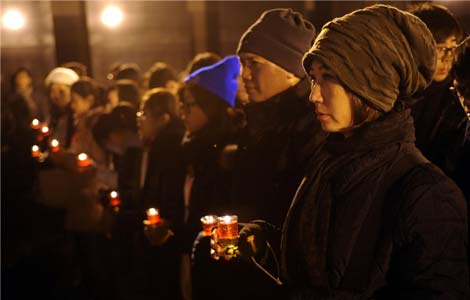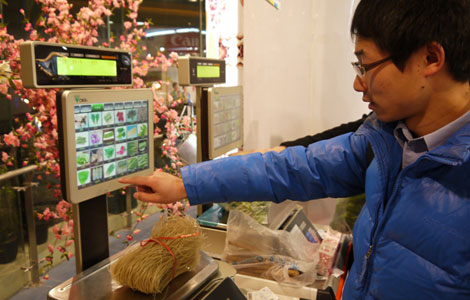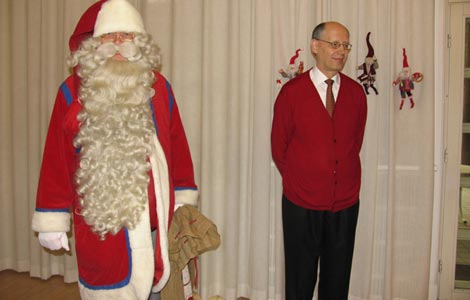
This year will be my sixth Spring Festival in Beijing since I moved here from Henan in 2006. And for the sixth year in a row, I will spend the holiday in the capital.
I do so not only because traveling is difficult at this time of year. Another reason is that the city empties out during the holiday. Around half of Beijing's 18 million residents come from other parts of China, and many of them return to their hometowns during the New Year.
With this exodus, buses and subways are much less crowded. And because Beijing is China's capital, most cafés and restaurants remain open at least part of the holiday. All of this makes Spring Festival the perfect time to stay here and relax with a book or contemplate life in a favorite quiet coffee bar.
However, one of my best Beijing Spring Festival memories has nothing to do with such activity. It dates back to the 2009 New Year, when I lived in an apartment complex on the corner of Ghost Street and Dongzhimen Beixiaojie.
Like this year's Spring Festival, that one came early, in the last week of January. The weather leading up to it was bitterly cold. Frigid air from Siberia caused the mercury to plummet, while a howling wind made it feel even colder and kept me awake throughout the night.
On the last day of work before the festival, our boss let us go home early, so I immediately headed to the warm Kenzo Oriental Mall, to curl up with coffee and a book in one of its cafés. But when I left there mid-afternoon, it was a little warmer and the wind had died down. After being cooped up indoors in front of a computer for nearly a week, my immediate inclination was to take a stroll through the hutongs on the west side of Beixiaojie.
I soon came across three children, two boys and a girl, none of whom could have been older than 10. They were all bundled up against the cold and playing a game of marbles. They had just two marbles, both of which were old and scruffy "cats-eyes." When I played marbles as a small child, these marbles were not highly prized.
But despite having just the simplest of toys, they were having the time of their lives, running back and forth as they shot the marbles, talking in animated voices and laughing out loud. I paused to watch them, asking the girl how old she was. She replied in English, saying, "I'm 9," and thanked me when I told her they were all very "ke ai" (可愛), or "cute."
After leaving the scene, I thought about how different these children were from their affluent counterparts. Around Christmas time, I often see the latter getting expensive toys as gifts in some upscale department store and say to myself, "Within a few months, most will certainly be bored with their new playthings."
Of course, hutong life should not be romanticized. My Dongzhimen neighbor's middle school-aged daughter, for example, preferred living in the apartment block over their old siheyuan, as it was larger and had modern conveniences, like an indoor toilet.
But I also think that while the three hutong children were not materially wealthy, their lives were, in other important ways, richer than those of more affluent kids. In particular, the dense and close-knit hutong neighborhood offers them cultural and social resources that only come in strong and cohesive communities.
Thanks to this community, these children—most now come from one-child families—have more than just a few neighborhood kids to serve as friends and playmates. Several generations of adults also act as mentors and teachers, assisting children not only with school lessons, but with practical life matters as well. It really does take a hutong to raise a child!
Finally, since people in the neighborhood all look after one another, children can safely roam about on their own. Most parents in the US would be very reluctant to let their very young children play alone, without adult supervision.
This kind of dense associational life is largely, if not completely, absent from most big apartment blocks, including the newer, upscale ones inhabited by China's nouveau riche.
In the summer of 2009, I moved from Dongzhimen to Sanlitun and did not do any hutong walks during the 2010 and 2011 Spring Festivals. But if the weather is good this year, I'll look forward to revisiting my old Dongzhimen-area hutong haunts.
The author is an American corporate trainer in China.







